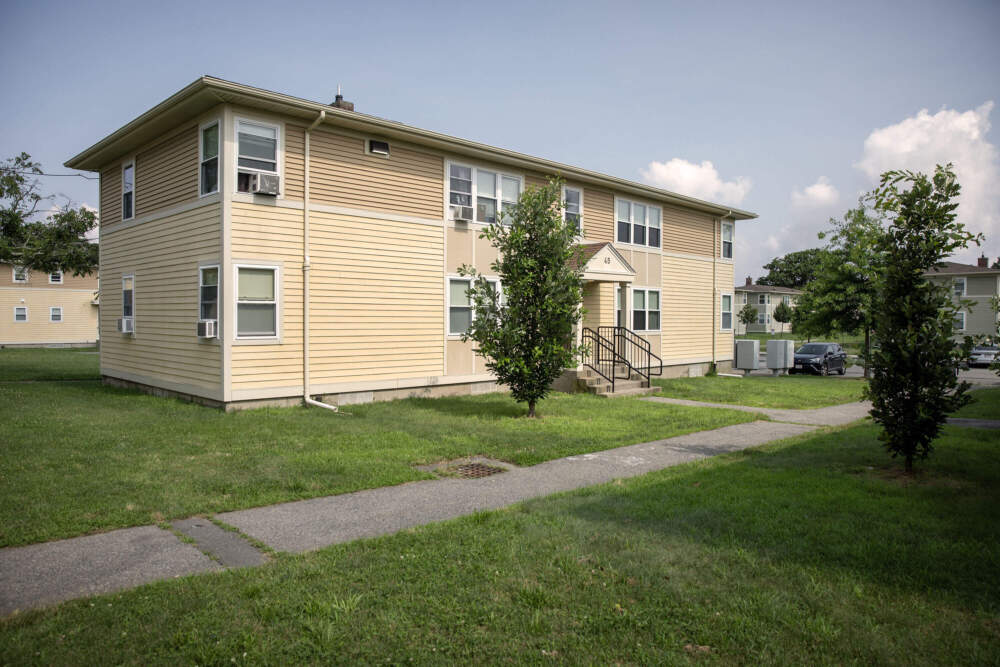Gov. Healey pitches $4.1 billion plan to deal with affordable housing crisis
Gov. Healey pitches $4.1 billion plan to deal with affordable housing crisis WBUR News


Gov. Maura Healey Unveils $4.1 Billion Bond Bill to Address Affordable Housing Crisis in Massachusetts

Governor Maura Healey has introduced a $4.1 billion bond bill aimed at jump-starting the creation and renovation of affordable housing across Massachusetts. This proposal is more than double the size of the state’s previous major housing bond bill enacted in 2018.
Addressing the Housing Crisis and Homelessness
Governor Healey recently declared a “state of emergency” due to the shortage of shelters and the increasing number of homeless individuals. Massachusetts has long faced a shortage of affordable housing, with over 184,000 people on the waitlist for state public housing.
Key Components of the Proposal
The bond bill includes a comprehensive range of measures to stimulate the construction of new housing. The Healey administration estimates that this bill could help create, preserve, or improve 65,000 homes.
- Tax breaks: The proposal includes various tax breaks to incentivize affordable housing construction.
- Legal changes: The bill introduces legal changes to facilitate the development of new housing.
- Other efforts: Additional efforts are included in the bill to support the construction of new housing.
State Secretary of Housing Ed Augustus stated, “This is breaking the mold in terms of what we’re asking for. We think that’s what the moment demands. That’s what the housing crisis needs in order to move the needle.”
Addressing Vacant Units and Repairs
A recent investigation by WBUR and ProPublica revealed that nearly 2,300 units of state-funded public housing are unoccupied, many of which require repairs or major renovations. In response to this finding, Secretary Augustus announced a “90-day push” to reduce the number of vacancies in state public housing by the end of the year. Financial and other assistance will be provided to local housing authorities responsible for maintaining and operating these apartments.
Governor Healey’s bond bill allocates $1.6 billion for the repair and modernization of state-run public housing units across Massachusetts. This funding is expected to cut the backlog of $3.2 million in repairs in half. The state will continue to seek opportunities to address the remaining backlog.
“That’s what the housing crisis needs in order to move the needle.”
Ed Augustus
David Hedison, executive director of the Chelmsford Housing Authority, expressed his enthusiasm for the increased funding, stating, “When I heard the amount, I felt a major sigh of relief.” Hedison referred to it as a “down payment” on efforts to preserve the state’s public housing stock, which includes 41,500 state-funded subsidized units.
Expanding Housing Funds and Encouraging Denser Development
The bond bill also includes increases for other housing funds, such as those dedicated to creating and preserving affordable housing, environmentally-friendly homes, and apartments for individuals experiencing homelessness or recovering from substance abuse. It establishes new funding sources, including $175 million for municipal infrastructure projects aimed at encouraging denser housing development.
Real Estate Transfer Fee and Tax Credits
The bill allows cities and affordable housing commissions to impose taxes of up to 2% on real estate sales to fund affordable housing. The first $1 million of a home sale would be exempt from this tax, with higher exemptions in counties where the median housing price exceeds $1 million. Some cities, like Boston and Somerville, have already sought permission from the Legislature to enact such a tax, known as a real estate transfer fee.
Additionally, the bill introduces new tax credits to incentivize the development of homes for low- and moderate-income individuals. It also expands the existing Community Investment Tax Credit, which supports donations to community development corporations.
Encouraging Accessory Dwelling Units and Affordable Housing Inclusion
Under Governor Healey’s plan, single-family homeowners would have the right to build “accessory dwelling units” of less than 900 square feet on their lots.
The proposal also aims to make it easier for communities to require developers to include affordable housing units in new buildings. It reduces the threshold needed to enact such a measure from two-thirds to a simple majority of a government body.
SDGs, Targets, and Indicators
| SDGs | Targets | Indicators |
|---|---|---|
| SDG 1: No Poverty | 1.3: Implement nationally appropriate social protection systems and measures for all, including floors, and by 2030 achieve substantial coverage of the poor and the vulnerable | – |
| SDG 11: Sustainable Cities and Communities | 11.1: By 2030, ensure access for all to adequate, safe and affordable housing and basic services and upgrade slums | – |
| SDG 11: Sustainable Cities and Communities | 11.3: By 2030, enhance inclusive and sustainable urbanization and capacity for participatory, integrated and sustainable human settlement planning and management in all countries | – |
| SDG 11: Sustainable Cities and Communities | 11.4: Strengthen efforts to protect and safeguard the world’s cultural and natural heritage | – |
| SDG 11: Sustainable Cities and Communities | 11.a: Support positive economic, social and environmental links between urban, peri-urban and rural areas by strengthening national and regional development planning | – |
| SDG 11: Sustainable Cities and Communities | 11.b: By 2020, substantially increase the number of cities and human settlements adopting and implementing integrated policies and plans towards inclusion, resource efficiency, mitigation and adaptation to climate change, resilience to disasters, and develop and implement, in line with the Sendai Framework for Disaster Risk Reduction 2015-2030, holistic disaster risk management at all levels | – |
| SDG 17: Partnerships for the Goals | 17.17: Encourage and promote effective public, public-private and civil society partnerships, building on the experience and resourcing strategies of partnerships | – |
1. Which SDGs are addressed or connected to the issues highlighted in the article?
- SDG 1: No Poverty
- SDG 11: Sustainable Cities and Communities
- SDG 17: Partnerships for the Goals
The article addresses issues related to poverty, affordable housing, and partnerships for achieving sustainable development.
2. What specific targets under those SDGs can be identified based on the article’s content?
- Target 1.3: Implement nationally appropriate social protection systems and measures for all, including floors, and by 2030 achieve substantial coverage of the poor and the vulnerable
- Target 11.1: By 2030, ensure access for all to adequate, safe and affordable housing and basic services and upgrade slums
- Target 11.3: By 2030, enhance inclusive and sustainable urbanization and capacity for participatory, integrated and sustainable human settlement planning and management in all countries
- Target 11.4: Strengthen efforts to protect and safeguard the world’s cultural and natural heritage
- Target 11.a: Support positive economic, social and environmental links between urban, peri-urban and rural areas by strengthening national and regional development planning
- Target 11.b: By 2020, substantially increase the number of cities and human settlements adopting and implementing integrated policies and plans towards inclusion, resource efficiency, mitigation and adaptation to climate change, resilience to disasters, and develop and implement, in line with the Sendai Framework for Disaster Risk Reduction 2015-2030, holistic disaster risk management at all levels
- Target 17.17: Encourage and promote effective public, public-private and civil society partnerships, building on the experience and resourcing strategies of partnerships
The targets identified are related to implementing social protection systems, ensuring access to affordable housing, enhancing sustainable urbanization, protecting cultural and natural heritage, supporting economic and environmental links, increasing the adoption of integrated policies, and promoting effective partnerships.
3. Are there any indicators mentioned or implied in the article that can be used to measure progress towards the identified targets?
No specific indicators are mentioned or implied in the article that can be used to measure progress towards the identified targets.
4. SDGs, Targets, and Indicators
| SDGs | Targets | Indicators |
|---|---|---|
| SDG 1: No Poverty | 1.3: Implement nationally appropriate social protection systems and measures for all, including floors, and by 2030 achieve substantial coverage of the poor and the vulnerable | – |
| SDG 11: Sustainable Cities and Communities | 11.1: By 2030, ensure access for all to adequate, safe and affordable housing and basic services and upgrade slums | – |
| SDG 11: Sustainable Cities and Communities | 11.3: By 2030, enhance inclusive and sustainable urbanization and capacity for participatory, integrated and sustainable human settlement planning and management in all countries | – |
| SDG 11: Sustainable Cities and Communities | 11.4: Strengthen efforts to protect and safeguard the world’s cultural and natural heritage | – |
| SDG 11: Sustainable Cities and Communities | 11.a: Support positive economic, social and environmental links between urban, peri-urban and rural areas by strengthening national and regional development planning | – |
| SDG 11: Sustainable Cities and Communities | 11.b: By 2020, substantially increase the number of cities and human settlements adopting and implementing integrated policies and plans towards inclusion
Behold! This splendid article springs forth from the wellspring of knowledge, shaped by a wondrous proprietary AI technology that delved into a vast ocean of data, illuminating the path towards the Sustainable Development Goals. Remember that all rights are reserved by SDG Investors LLC, empowering us to champion progress together. Source: wbur.org
Join us, as fellow seekers of change, on a transformative journey at https://sdgtalks.ai/welcome, where you can become a member and actively contribute to shaping a brighter future.
|








